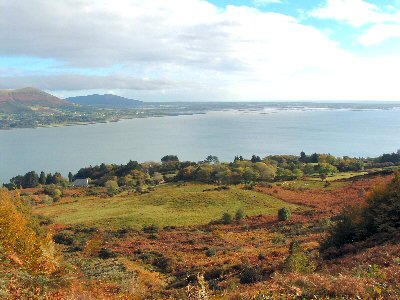‘Carlingford is beautifully situated on the south-west side of the spacious lough or bay to which it gives its name, and immediately at the base of an extensive range of mountains which terminate at this point.
It consists of 288 houses and, though small, has an interesting appearance from the venerable ruins of its castle and abbey: it has a sub-post office to Newry.
The scenery of the bay is remarkably fine: the Mourne mountains on the opposite side are beautifully varied with rocks, woods, heath and verdure: and in the foreground the shores are enlivened with neat cottages and numerous bathing-lodges.
Carlingford Mountain which overhangs the castle attains an elevation of 1935 feet above the level of the sea: from its height and position it intercepts, during a great part of the summer, the direct rays of the sun for several hours before sunset.
The oysters found in the bay are highly esteemed and are sent in great quantities to Dublin, Liverpool and other places. There is some trade in grain: great quantities of herring are caught during the season and fishing nets are made. The port has also some trade with Dublin to which it sends large quantities of potatoes. Coal is imported from Scotland and Whitehaven.
The harbour dues are collected in the name of the Marquess of Anglesey as lord of the manor and Admiral of Carlingford Bay: they are leased for
